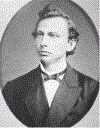The Pressure: Before and after Schiøtz
- PMID: 32782212
- PMCID: PMC7642165
- DOI: 10.1016/j.ogla.2020.04.015
The Pressure: Before and after Schiøtz
Abstract
Purpose:: To report on the development of the Schiøtz tonometer and to put its subsequent role into perspective with regard to the history of glaucoma, the career of Hjalmar Schiøtz (1850–1927), and the evolution of the tonometer leading up to the development of the Goldmann tonometer.
Introduction:: The story of physicians’ attempts to assess intraocular pressure goes back many centuries. Mechanical instruments designed for this purpose were first introduced in the latter part of the 19th century, but did not gain traction until the introduction of the Schiøtz tonometer in 1905. This report reviews details about this instrument, its inventor and its role in glaucoma treatment.
Conflict of interest statement
Conflict of Interest: “No conflicting relationship exists for the authors”
Figures








References
-
- Jayne WA. The healing gods of ancient civilizations. New Haven, Yale University Press, 1925.
-
- The International Center for Reiki Training, Reiki News Articles. Hippocrates and the laying on of hands. https://www.reiki.org/reikinews/hippocratesB.htm.
-
- Banister R. Banister’s Breviary, A treatise of one hundred and thirteene diseases of the eyes and eye liddes The second time published with some profitable additions of certain… London: Felix Kingstone for Thomas Man, 1622.
-
- Kronfeld PC. Glaucoma, Chapter 11 in The History of Ophthalmology by Albert Daniel M. and Edwards Diane D.; Cambridge, MA; Blackwell Science; 203–223, 1996.
Publication types
MeSH terms
Grants and funding
LinkOut - more resources
Full Text Sources
Medical

